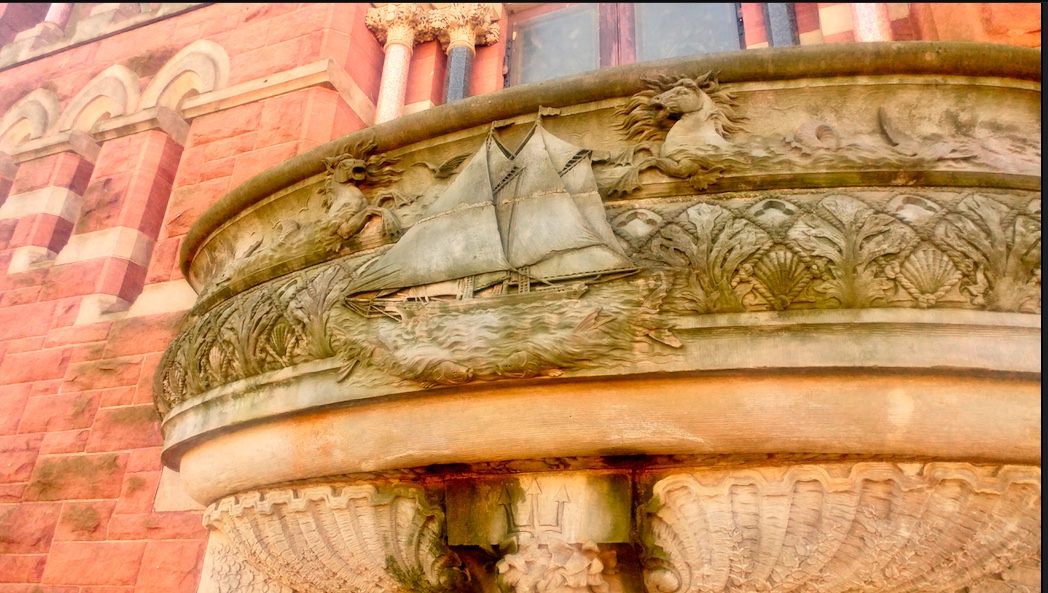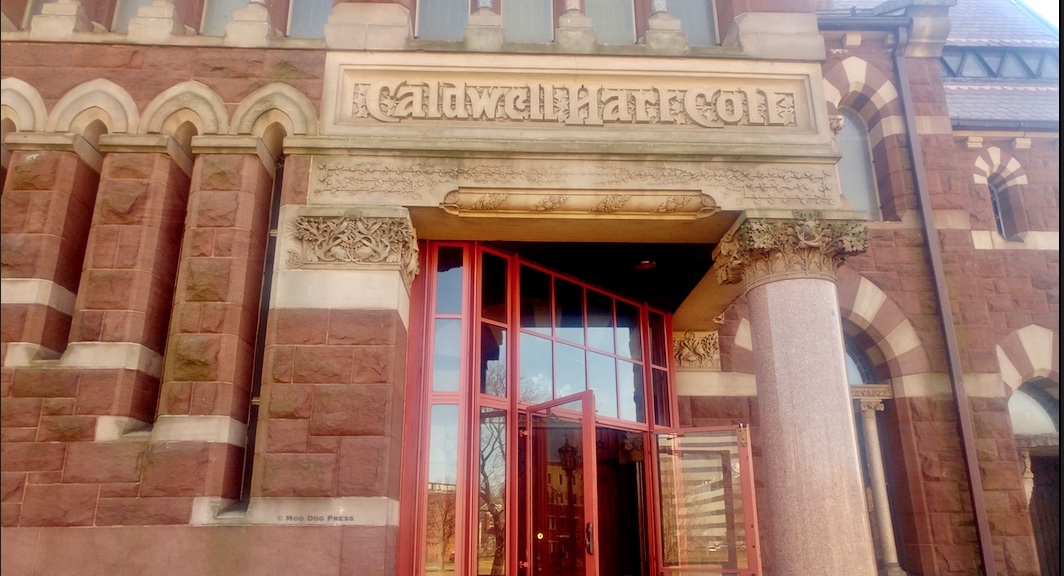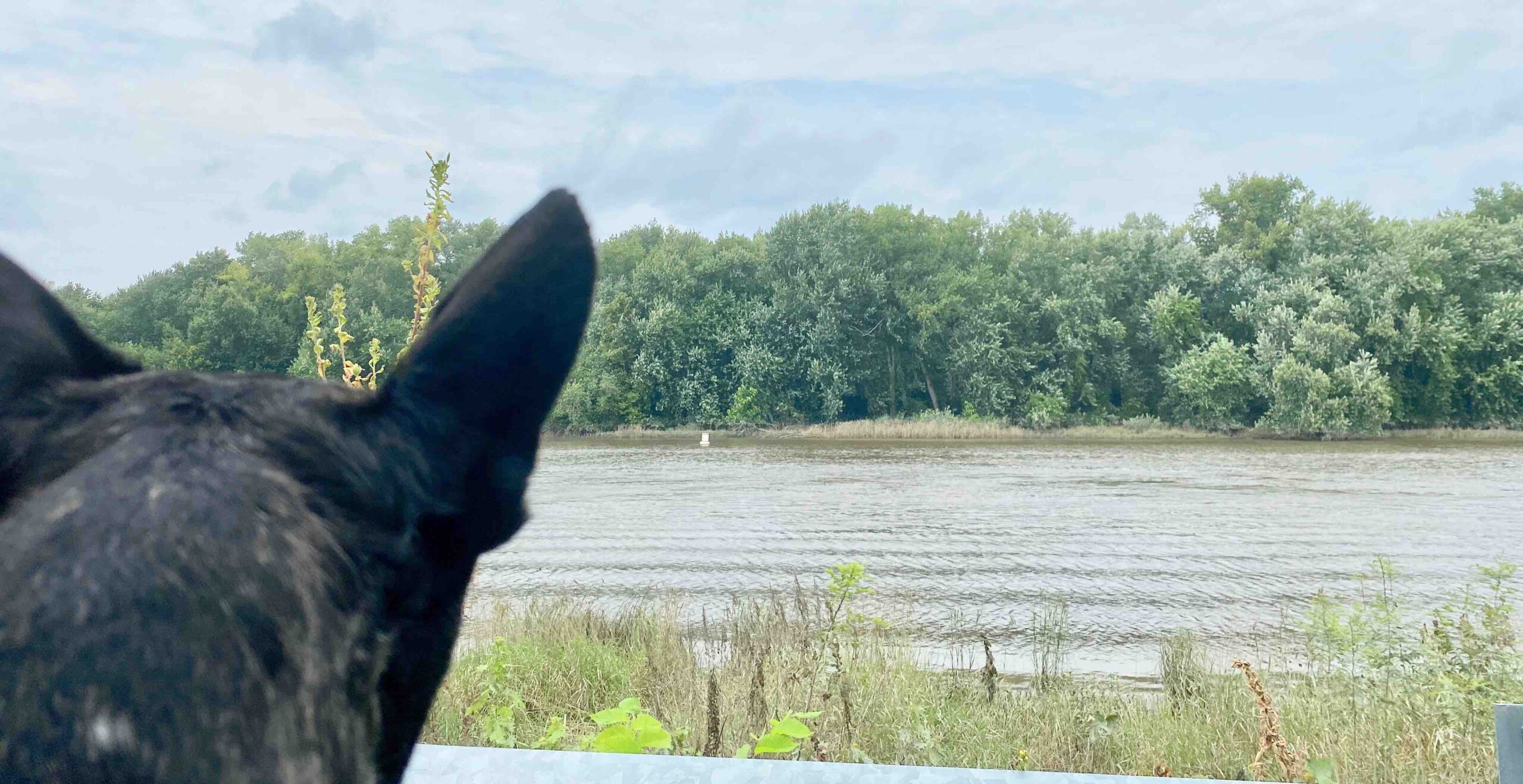In Time: Homeplaces, Horses, Heartbreak and Elizabeth Hart Jarvis Colt
“The historian will tell you what happened. The novelist will tell you what it felt like.” — E.L. Doctorow
I am. (Or was.) You are. Only time stands between us.
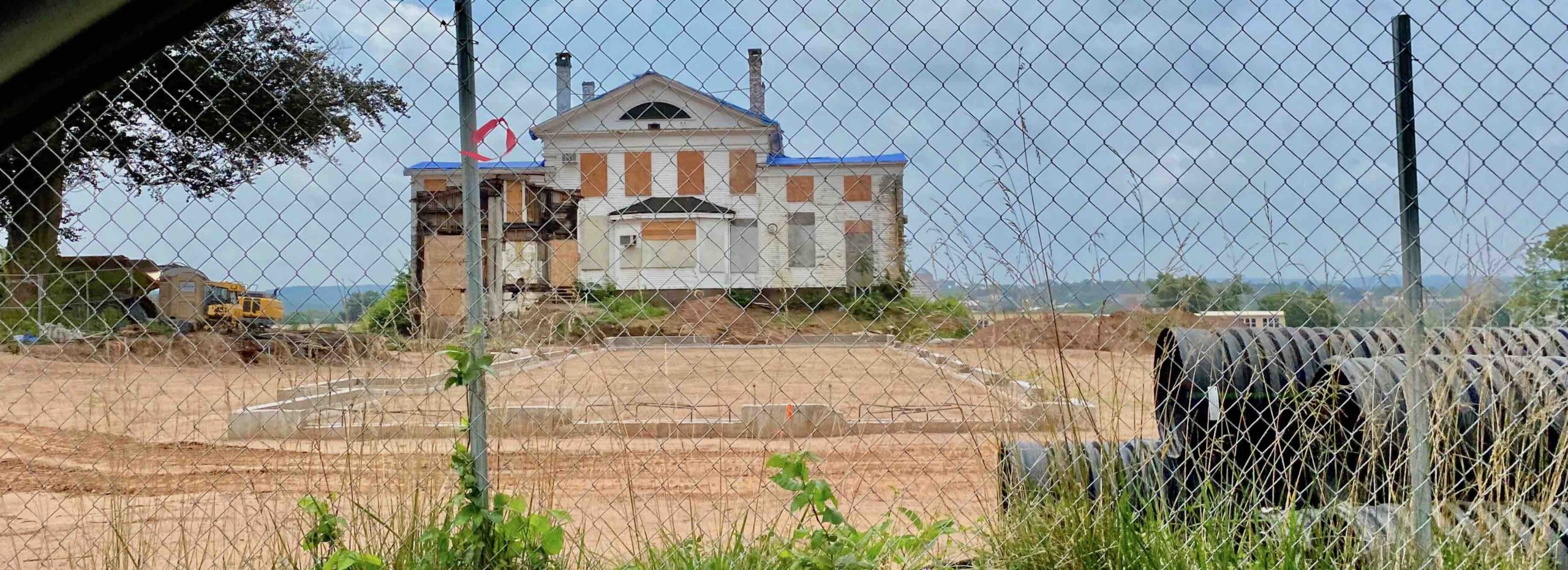
Hart-Jarvis House stands on a river bluff in Portland, Connecticut; the Connecticut River and Middletown beyond. Elizabeth Hart Jarvis (later, Colt) history here. From Portland Hisotircal Society: “The Hart/Jarvis House was built in 1829-30, by Colonel Richard Hart of Hartford and Old Saybrook for his daughter, Elizabeth and her husband, Reverend William Jarvis, pastor of the Trinity Episcopal Church. Their daughter, Elizabeth Hart Jarvis, married Samuel Colt of Hartford and for many years after his death ran Colt’s Patent Fire-Arms Manufacturing Company. After the Jarvises, the house was purchased by Erastus Brainerd, Sr. and much later by the Gildersleeve family. The Hart/Jarvis House is an impressive Greek Revival Temple mansion, comparable in some respects to Middletown’s Samuel Russell House, a type rarely found in a community the size of Portland. It is set on a cut brownstone foundation.”
I visited Colt Park today with @MayorBronin to announce $1 million in federal funds I secured with @SenBlumenthal and @ChrisMurphyCT to restore the Carriage House & Colt Gardener's Cottage, moving us one step closer to realizing the vision of Coltsville National Historical Park. pic.twitter.com/9SqA8k164I
— Rep. John Larson (@RepJohnLarson) August 4, 2023
Views from inside the Colt dome.#VRhttps://t.co/MXAcsEa8Uk with #Matterport
— Moo Dog Press (@MooDogPress) August 5, 2023
Mark. Signature. Book, books. Image inside a cave or carved in stone, markings on a clay tablet. Compelled to create an object be it painted, chalked, built. Biological offspring. Shaping a landscape, leaving a legacy as open space or an endowment. Information carried forward. A business, a brand. When tragedy cuts into a life, does that flatten a person or make them rise?
Case in point. Elizabeth Jarvis Colt. Her husband, Samuel Colt, dies at age 47. The Colts had four children; three — including a 3-year-old daughter — do not survive childhood. Then her only surviving son, Coldwell Colt, dies at 35. So despite great wealth and accomplishments in business, deep sorrows. How does she respond? She rebuilds. Creates. Gives. Keeps going. Endows institutions, encourages artistry. Leaves her family home in her will to shelter others. A parent who outlived all of her children, just think on that.
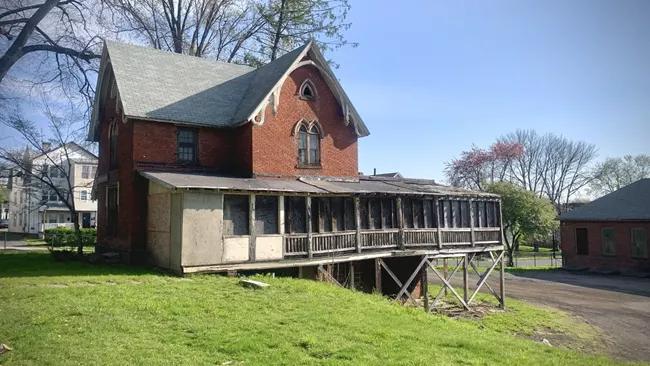
The Colt Gardener's House in 2021.
Photo Credit: NPS/Dani Beekman
“Cheating the seasons, and transplanting the tropics to our colder clime…you walk through them in a bewilderment of perfume, that amounts to the lusciousness of taste. Here the innumerable colors and combined fragrance of flowers from every country…”
Armsmear: The Home, the Arm, and the Armory of Samuel Colt. A Memorial
The gardener was responsible for maintaining the hot and cold greenhouse and the variety of plants the Colts grew. Aside from flowers, the greenhouses had traditional crops such as cotton, rice, and numerous vegetables. In the graperies, one walked under the plants as they climbed the walls to the glass ceilings and pineapples flourished in the pineries. Other fruits grown throughout the year included bananas, figs, nectarines, and peaches. The buildings are not open to the public. You many walk around them, but please be respectful of park property. Image is linked to official NPS site for more history, context.
But if you look closely you can still see the thoughtful and intricate designs of the buildings, imagine the gardener hard at work, and hear the horses in the stables. — NPS
“The gardener lived in a small red brick house tucked behind the stable and near the deer park. The building has undergone structural changes with additions and demolitions over the years. Today, ivy grows on the walls and chimney, but the arched windows and the ornate decorated eaves on the roof remain the same, reminders of another time.
“The Carriage House, a red brick building resembling a garage, is located near the pools. Constructed of brick and wood, with a copula, the Colt’s horses were stabled in the wooden shed. With simple arched windows and a large stone foundation with a brick building set on top, the Carriage House was easily accessible to the Colts. Armsmear was designed with an arched entrance to allow a carriage to pass through and down to the stables. For decades the building and stables would serve the Colts before it was deeded over to the city of Hartford with the passing of Elizabeth in 1905.
“1933, President Roosevelt, under the New Deal Program, established the Federal Emergency Relief Administration which later was replaced by the Works Progress Administration. Both programs were established to create jobs and fuel the economy during the Great Depression. The City of Hartford benefited from these programs and specifically Colt Park in 1934. The Carriage House saw the wooden stable torn down and replaced with a brick building. This was done at low cost to the city as much of the materials for the project were salvaged from various wrecking jobs. After the construction, the building was used for storage and still is today.”
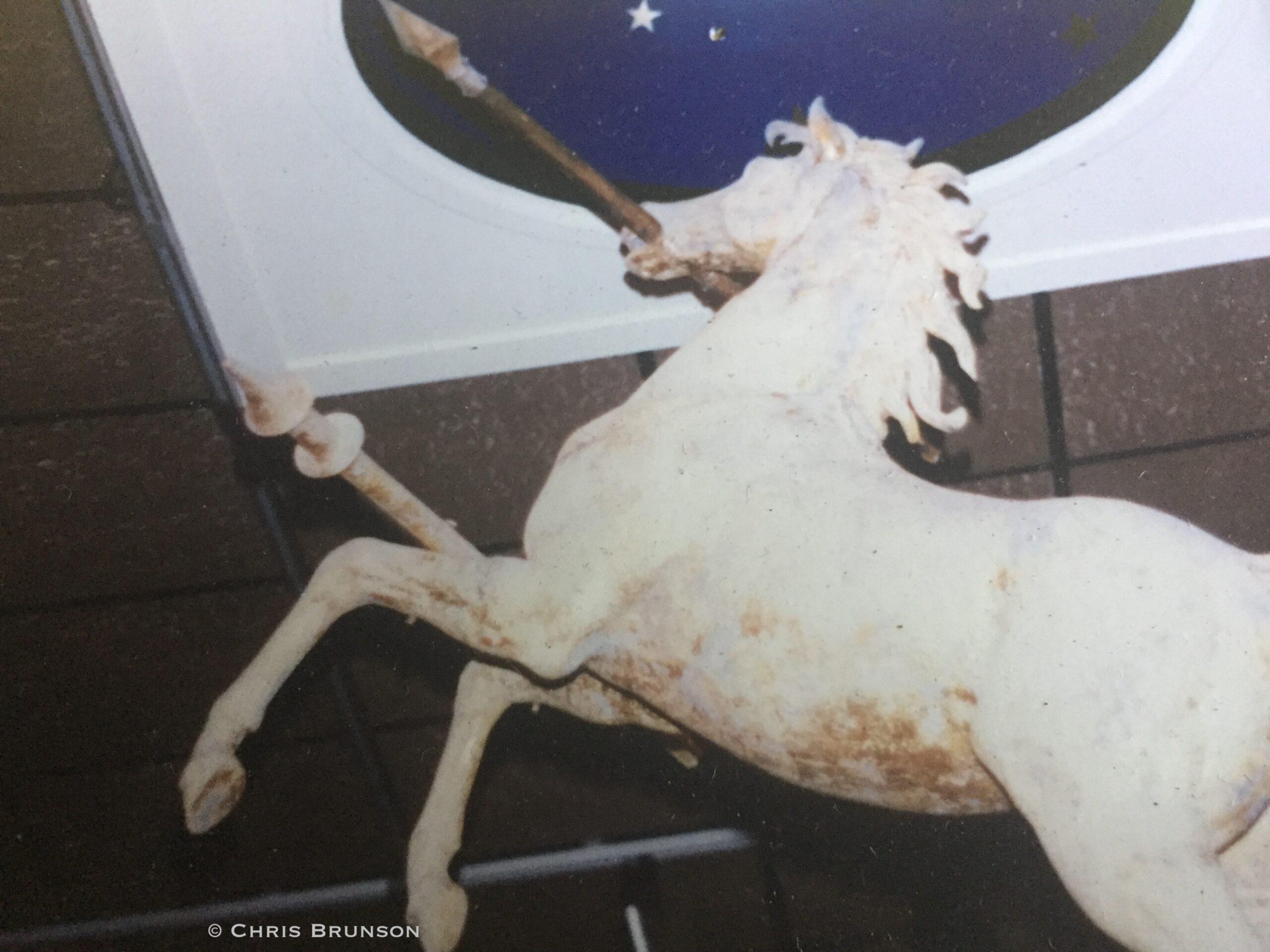
An image of a film photo taken a very long time ago, inside collections in Hartford, the Rampant Colt.
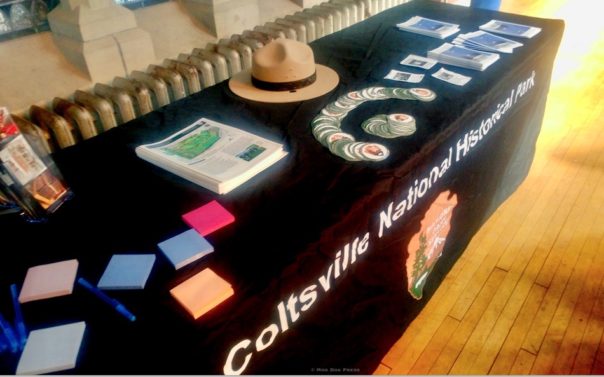
Inside the Parish House, NPS table of information, booklets, even a Coltsville sticker, display at public discussion and Q&A with scholars seen at the Coltsville Scholars Roundtable a few years ago.
Years back but not so long ago, the National Park Service event in Hartford (part of a larger National Council on Public History gathering) disseminated information in the form of printed booklets, sparked conversations.
Elizabeth Colt commissioned architect Edward Tuckerman Potter to design and build the Church of the Good Shepherd in memory of her husband (completed in 1868; consecrated in 1869). Then years later, asks Potter to come out of retirement to create the Parish House in memory of her son, Caldwell.
The exterior and interior details are astonishing. The amenities for workers, surprising. The desire for a memorial to stand when lives are gone is threaded through all.
“The Great Lawn between the Church and the Parish House was the original playing field for The Hartfords, (aka The Hartford Dark Blues), one of the National league's first Base Ball teams.”
— from a booklet “Coltsville National Historical Park”
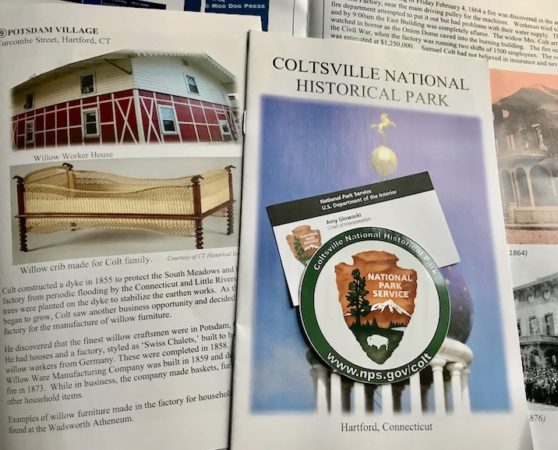
The NPS booklet can be used to tour sites in Coltsville, which is still in development for interpretation.
The incredible architecture of Church of the Good Shepherd and Caldwell H. Colt Memorial Parish House in Hartford, 155 Wyllys St. The Church of the Good Shepherd and Caldwell H. Colt Memorial Parish House were designed by the architect Edward Tuckerman Potter, and built by Mrs. Colt as a memorial to her deceased husband and their eldest son. (Detailed description via NPS, below.)
Edward Tuckerman Potter's design (go ahead, try to define this human; he's the same person who dreamed up the fanciful and ornate concoction that is the Mark Twain House. Brickwork, chimneys, steamboat-like porch, glass conservatory. While in Hartford, try to see both sites if you can.)
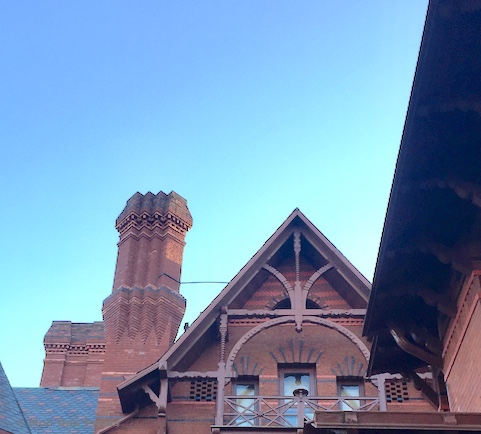
Detail of what was once the home of Sam and Olivia Clemens and family in Hartford, Connecticut. He's better known as Mark Twain; today the site is a museum (closed because of COVID-19 pandemic, but virtual tour online.
From the U.S. Department of Interior National Park Service (NPS) National Register of Historic Places Inventory nomination form:
“Edward Tuckerman Potter's exquisite sensitivity to the color and texture of combined stones is apparent throughout the design of the Church of the Good Shepherd. The walls are Portland brownstone dressed with light Ohio sandstone. The ‘Italianate' arches above windows and doors are also of alternating brown and light stones, and alternating red and grey columns of polished Scotch granite separate the thirteen lancet windows of the apse.
“The irregular plan of the church is distinguished by a handsome semi-detached stone tower with high spire at the northwest corner and a large, single transept on the north side. Inside, this transept, used as a chapel, is ingeniously separated from the nave by a magnificent floor-to-ceiling carved screen set with plate glass.
“Potter's predilection for delicate, naturalistically carved ornamentation (Anglo-inspired) is nowhere better displayed than in the carved capitals and gable stones on the exterior, and in the wood-carved foliage in the spandrels of the arches inside. The unique feature of this church is the southwest or Armorer's Porch, originally the main entrance. Here the tools of the armorer's trade, the products for which Samuel Colt was renowned – revolver and machinery parts – are carved amid the foliage of the capitals and Christian symbols along the gable edge. The theme of this porch conjures up the paternal image of Colt just as the name of the church and most religiously symbolic motifs appear to relate to the special memorial character of the whole.
The church interior offers a breathtaking visual experience to even the most casual visitor. A virtual forest of open chestnut timbers supports a blue ceiling once studded with gold stars. Slim cast-iron columns – encased in wood since 1936 but originally painted bronze and silver – carry ash wood arches which separate nave from aisles. Superb Victorian windows enrich the whole with brilliant hues of red, blue and yellow…”
Parish House: “When her eldest son Caldwell Colt died in 1894, Mrs. Colt again commissioned Potter to design a memorial parish house to serve the church as a Sunday School and recreation hall. She also consulted the expert firm of Olmsted, Olmsted, and Eliot on the landscaping of the grounds. Although their plans do not appear to have been followed, the siting of the parish house, southwest of the church and raised on an artificial eminence, is especially felicitious (sic). Superficially, Potter kept to the coloristic, Gothic style of the church, but the imposing symmetry reflects the architectural taste of the 1890s, a taste disposed toward formality and grand axial spaces. The building was novelly planned with symmetrical apse-like ends, similar to the church's apse, a grand staircase inside across the front, an iron ‘bridge' leading to the openwork fleche, and exposed steel lattice girders in the spacious and inventively- styled auditorium. Throughout there is an abundance of ornamentation, most being carvings relative to the travels and nature pursuits of yatchsman (sic) Caldwell Colt.
“The Colt Memorial buildings form a complementary unit, neither part of which could be taken away without destroying the integrity of the whole.”
“Potter's Hartford Buildings: Edward Tuckerman Potter is better represented in the Hartford area than anywhere else in America. Besides buildings already discussed, Potter designed the library at Armsmear (the Colt Mansion in Hartford), Trinity Church in Wethersfield (1871-1874), and two houses in the Nook Farm enclave at Hartford — one for George H. Warne (razed 1959), and the excellently restored Mark Twain house (1873-1874). The Twain house is Potter's most noteworthy domestic building, and is recognized as one of America's great Victorian houses. Hartford is doubly fortunate in also having the finest ecclesiastical ensemble, the Colt Memorial buildings.”
— NPS
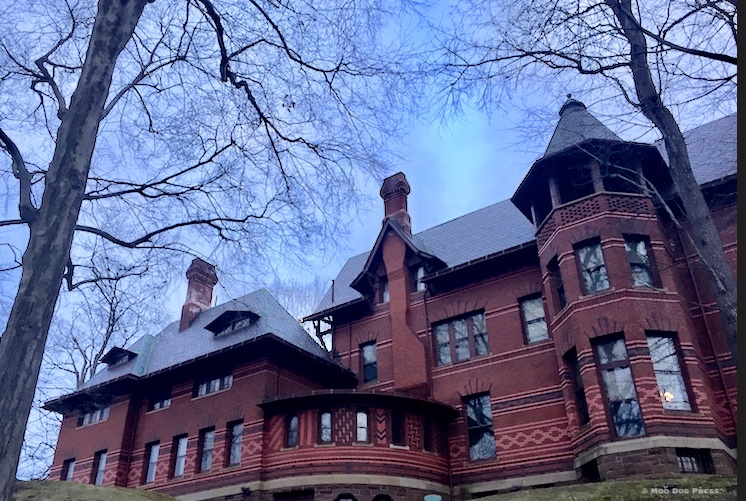
Edward Tuckerman Potter, architect's work as viewed from the ravine below The Mark Twain House and looking up. This fantastical structure was the home of Samuel Clemens and his family.CB/MDP
Against the tides of time, which is relentless, remember me. Wangunks, the people at the bend in the river. Also see this resource for expanding knowledge of how extensive were the lives here.
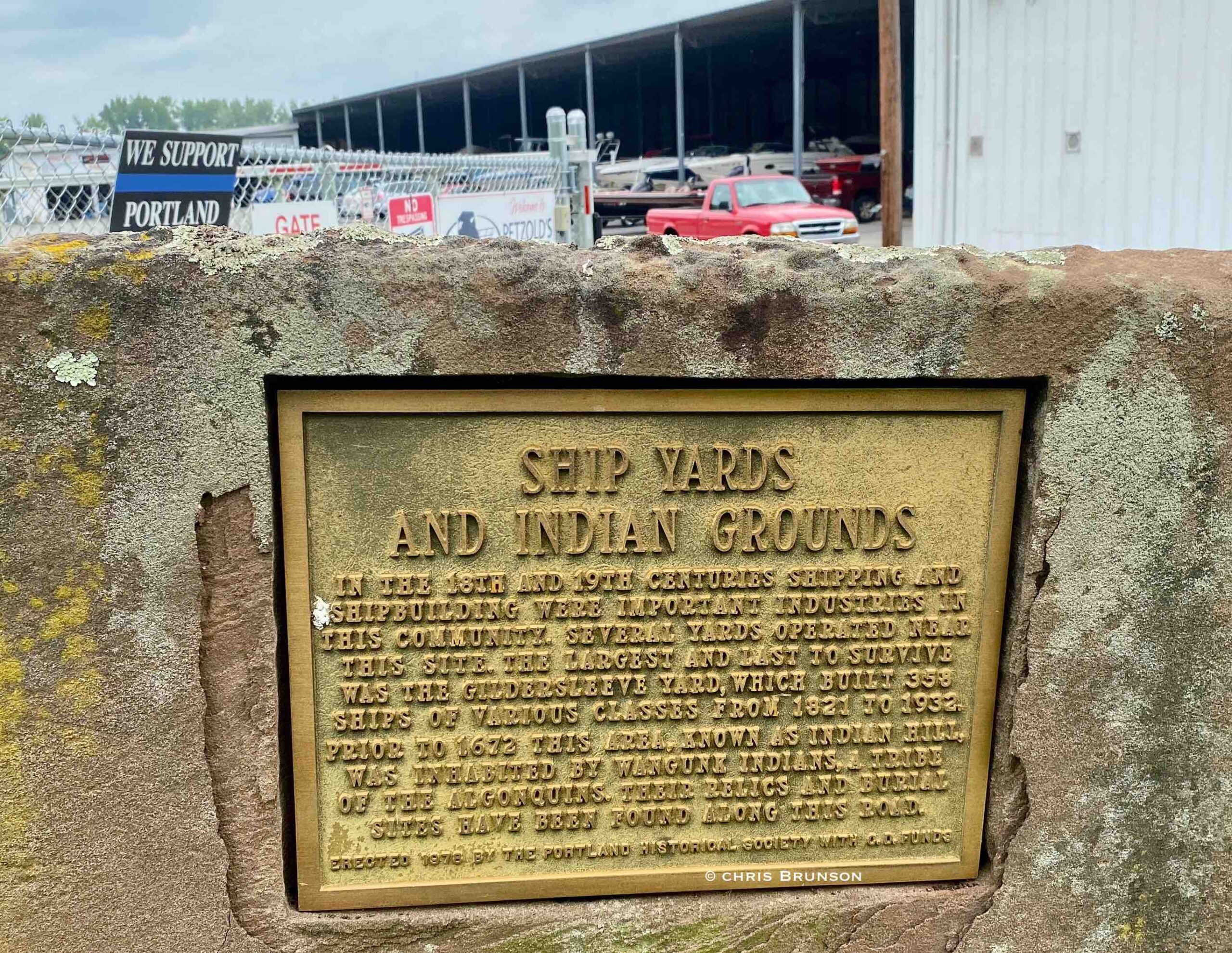
The Wangunks history here, astounding; Portland, CT.
Editor's note: Parts of this story have been previously published, but included here due to recent news. Viewing the Hart-Jarvis House in Portland, learning more about the site. Link to Portland Historical Society PDF about the structure.. Oh, and the diagnosis is lymphoma.

